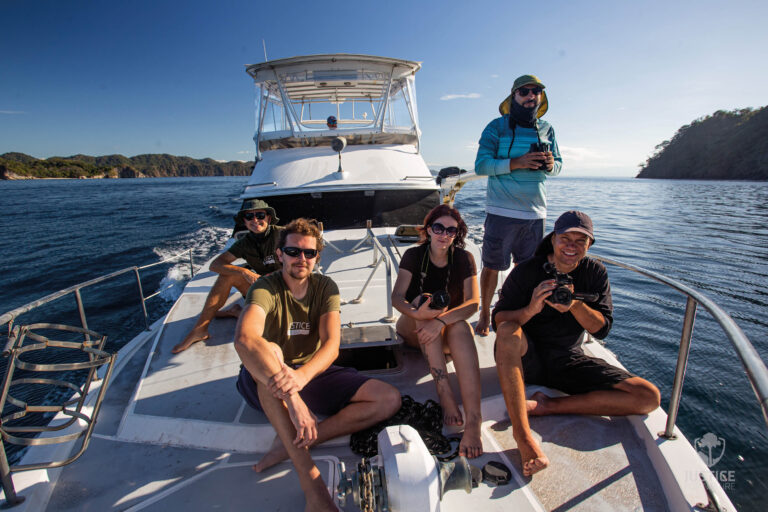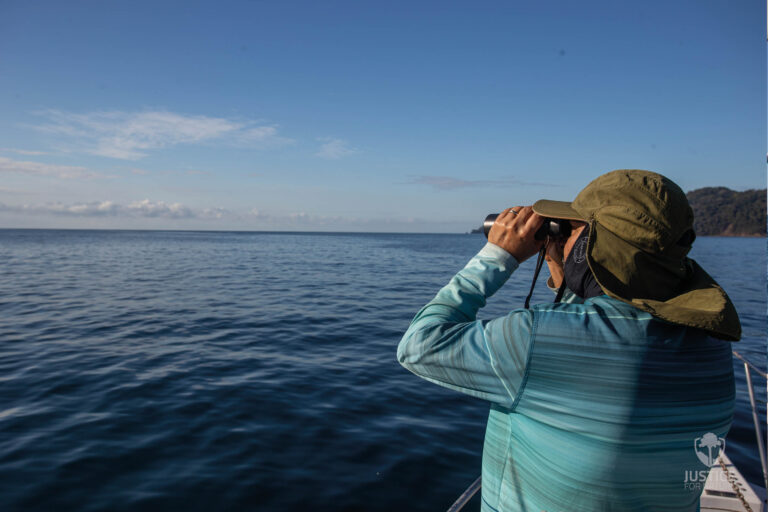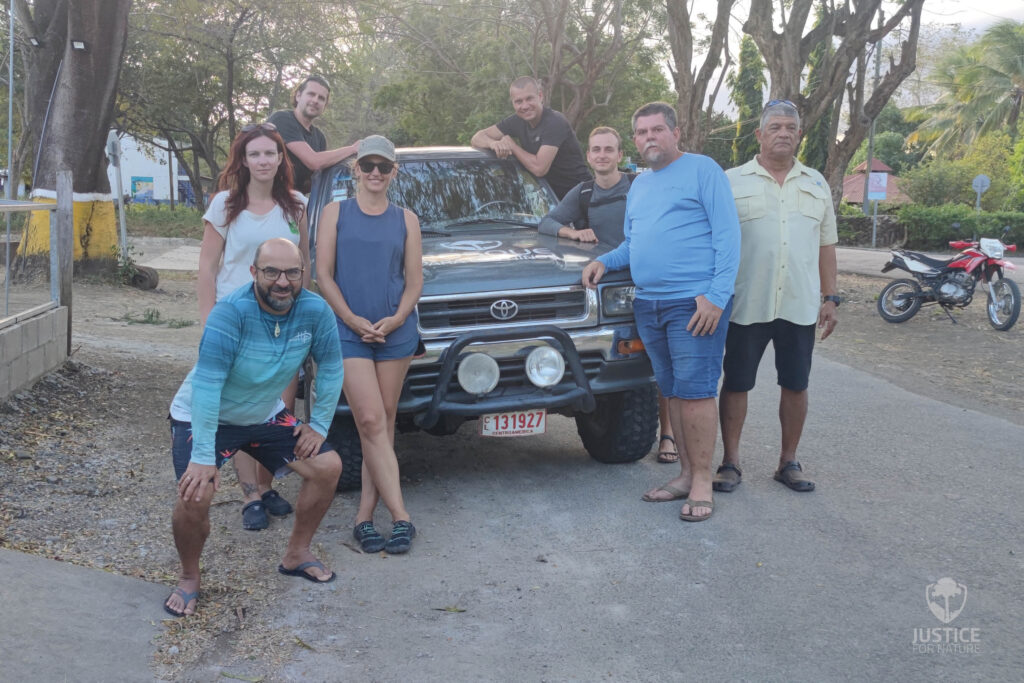Crossing the ship Spartan into the bay Santa Elena
As we sailed out of Puntarenas on January 11, 2023 and stood on the deck of The Spartan, we were in tears. But few could have imagined what had preceded that day.
Several inspections of completely unsuitable boats in various stages of disrepair, finding competent people to help us, then finding a suitable vessel, inspecting it, checking it and finally a dry dock that kept us busy for several days. Cleaning and painting the hull, changing the oil in the engines and generator, or the filters. After all this hustle and bustle, we were suddenly on deck, the sun rising behind our backs and the vast Nicoya Bay opening up before us, and three days of sailing to our home bay of Santa Elena …

The crew consisted of hired captain Rogelio Diaz, engineer Luis, marine biologist Frank Garita, Milan Jeglík, Zuzana Koloušková and other members of Oko Oceán Tomáš Šmátrala, Michaela Kršáková and David Jaroš. Three days were ahead of us along the Pacific coast to Santa Elena Bay. The first amazing stop during the cruise was the island of Capo Blanco, a huge white rock inhabited by seabirds, especially frigatebirds and terns. Here we dipped our hydrophone under the surface for the first time and listened to the humpback whales singing with wonder in our eyes. We were mesmerized and couldn’t believe our ears. The headphones were rotated among all the crew members and most of us heard the whales singing for the first time thanks to the hydrophone. It was beautiful. A few dozen minutes later we stopped and took a dip in the open ocean. What followed was a dozens-mile cruise during which we enjoyed the presence of dolphins rampaging in front of our bow and around the ship. The seas were calm the entire first day and we headed at a good pace to our first night anchorage in Graza Bay. The night at anchor was a bit rocking so we preferred to keep watch and had a set anchor point on the GPS which we checked regularly.




The next day we set sail early in the morning before sunrise. More dolphin sightings followed and finally a humpback whale appeared. It was a female and she looked pregnant. She had swum to the Costa Rican shores to give birth to her offspring. She was swimming and unfortunately for us, she wasn’t going to dive, so we couldn’t photograph her tail fin. So we had to make do with photos of the dorsal fin. We didn’t want to disturb her for long, even though we followed all the instructions of our teacher, marine biologist Frank Garita. We said goodbye to the whale on her journey and sailed on towards the Catallinas Islands. By the time the lone rocky islands began to loom in the distance, the ocean was already in motion. The strong winds did not bode well. Slowly but surely we fought our way through the white cap waves that were becoming more frequent. The wind was knocking the white cap waves into the water chop and we knew we were on at least a level five on the Beufort scale. The Spartan, however, had no problems and we continued like a seesaw towards the next night anchorage. At one point a strong gust of wind knocked off our radio antenna and we lost contact with the mainland using the radio. Eventually the captain suggested that we should sail up to the Murcielago Islands to Santa Rosa NP where there would be a safe and quiet anchorage. Frank Garita contacted Leonel and Christian by cell phone and they arranged permission to anchor in the protected area of the park. The wind was picking up and the app was showing us that it would be significantly worse tomorrow. We finally reached our destination of Murcielago Islands and got into calm waters. On the paddleboard, Frank and I paddled up the beach to the ranger station, where we checked in and spent the next night at anchor in a beautiful bay. During the night, strong winds began to whip the otherwise calm bay and we spent a sleepless night waiting for what would come the next day.

On the final day of the crossing, we got up very early in the morning and headed towards Cuajinicquil. A critical rock corner in front of Playa Blanco Bay awaited us, where the waves rise more than anywhere else during the cruise. Just a few miles ahead the ocean was churning and the waves were toying with our monitor boat. By the time we reached the incriminating rock corner, we encountered three humpback whales and one even jumped out. However, the waves were so big that it was impossible to monitor and so we continued on. After crossing the critical point, we finally entered Santa Elena Bay and thought we had done it. Again the humpback whale appeared, but we were already heading for the harbor, which was about six nautical miles ahead of us. Suddenly there was a jerk in the engine room and he hurriedly checked the engine room. We were horrified to find that our fuel was leaking into the engine room and the fuel hose must have burst. The loss of diesel was noticeable and visible on the instruments and we were still a long way from port. The captain said we would give it a go, but it was a critical situation after all. Luis, the engineer, was transferring diesel from below deck into water barrels, and we were helping him and hoping aloud that the fuel would last. If it didn’t, we were in danger of driving the out-of-control boat into the rocky shore with the strong winds. An hour later we were sailing into calm waters in the lee and approaching Cuajiniquil harbor. We found our new buoy and finally made it out. It was won, we survived, but we lost a large amount of fuel that we had counted on for the next event. There was nothing to be done. We caught most of the diesel and stowed it in barrels, but the fuel was degraded by the salt water. However, our objective was accomplished, The Spartan was in her home port and the engineer was working on a list of necessary repairs. As of February 1, 2023, Luis will be entering service on our ship and will begin major preparations for the Eye of the Ocean monitoring season. We were happy and in great anticipation of the following events that were inexorably approaching!


